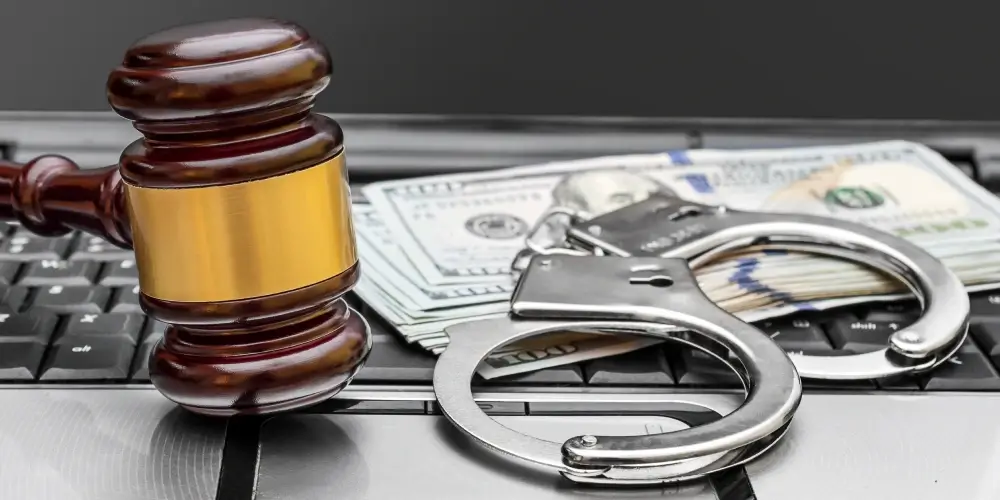

The Criminal Trial Process: From Arraignment to Verdict
14/05/2024 Lana Mathew 1892
Understanding the stages of a criminal trial is essential for anyone involved in or studying the legal system. The criminal trial process is a structured sequence of events that ensure justice is served while protecting the rights of the accused. This blog will explain the different stages of a criminal trial, from arraignment to verdict, highlight the roles of key participants in the trial, and underscore the importance of understanding the rights of the accused and the rules of evidence.
Stages of a Criminal Trial
1. Arraignment
The arraignment is the first formal step in the criminal trial process. During this stage, the defendant is brought before a judge, informed of the charges against them, and asked to enter a plea. The possible pleas include:
-
Guilty: The defendant admits to the charges.
-
Not Guilty: The defendant denies the charges and demands a trial.
-
No Contest (Nolo Contendere): The defendant neither admits nor disputes the charges, which has a similar effect to a guilty plea but cannot be used against the defendant in a civil lawsuit.
The judge may also address issues of bail and set dates for future proceedings.
2. Pretrial Motions and Hearings
Before the trial begins, both the defense and the prosecution can file various pretrial motions. These motions may seek to:
-
Suppress Evidence: Exclude evidence obtained unlawfully or in violation of the defendant's rights.
-
Dismiss Charges: Argue that the charges should be dismissed due to lack of evidence or procedural errors.
-
Change Venue: Request that the trial be moved to a different location to ensure a fair trial.
Pretrial hearings are held to resolve these motions and to discuss other procedural matters. These hearings help shape the course of the trial by determining what evidence will be admissible and what legal arguments can be made.
3. Jury Selection
If the case goes to trial and involves a jury, the process of selecting jurors, known as voir dire, takes place. During voir dire, both the prosecution and the defense question potential jurors to identify any biases or preconceptions that may affect their impartiality. Each side can challenge potential jurors for cause (specific reasons why a juror cannot be impartial) and use a limited number of peremptory challenges (removing a juror without stating a reason).
4. Opening Statements
Once the jury is selected, the trial begins with opening statements from both the prosecution and the defense. These statements provide an overview of the case and outline the evidence and arguments each side plans to present. The opening statements are not evidence but serve to set the stage for the trial.
5. Presentation of Evidence
The main phase of the trial involves the presentation of evidence. This stage is divided into two parts:
-
Prosecution’s Case: The prosecution presents its evidence first, calling witnesses and presenting physical evidence to support the charges against the defendant. The defense has the opportunity to cross-examine each witness.
-
Defense’s Case: After the prosecution rests, the defense presents its evidence, calling witnesses and presenting its own physical evidence. The prosecution can cross-examine the defense’s witnesses.
Both sides may also present rebuttal evidence to counter the other’s arguments.
6. Closing Arguments
After all evidence has been presented, both sides deliver closing arguments. During closing arguments, the prosecution and defense summarize their cases, highlight key evidence, and attempt to persuade the jury to deliver a verdict in their favor. Closing arguments are the last opportunity for each side to address the jury before deliberation.
7. Jury Instructions
Following the closing arguments, the judge provides the jury with instructions on the legal standards they must apply when deciding the case. These instructions include explanations of the charges, the elements that must be proven for each charge, and the definitions of legal terms. The judge also reminds the jury of the presumption of innocence and the requirement that guilt must be proven beyond a reasonable doubt.
8. Jury Deliberation and Verdict
The jury then retires to deliberate in private. During deliberation, jurors discuss the evidence, consider the legal instructions provided by the judge, and attempt to reach a unanimous verdict. The possible verdicts include:
-
Guilty: The jury finds that the prosecution has proven the defendant’s guilt beyond a reasonable doubt.
-
Not Guilty: The jury finds that the prosecution has not met its burden of proof, resulting in the defendant’s acquittal.
-
Hung Jury: The jury is unable to reach a unanimous decision, which may result in a mistrial. The prosecution can choose to retry the case with a new jury.
Once the jury reaches a verdict, it is read in open court, and the trial concludes.
Roles of Key Participants in a Criminal Trial
Judge
The judge presides over the trial, ensuring that legal procedures are followed and that the defendant’s rights are protected. The judge rules on pretrial motions, provides instructions to the jury, and may also determine the sentence if the defendant is found guilty.
Prosecutor
The prosecutor represents the government and is responsible for presenting the case against the defendant. The prosecutor’s duties include gathering evidence, questioning witnesses, and making legal arguments to prove the defendant’s guilt beyond a reasonable doubt.
Defense Attorney
The defense attorney represents the defendant and is responsible for protecting their rights and presenting a defense. The defense attorney’s duties include cross-examining witnesses, challenging the prosecution’s evidence, and presenting evidence and arguments to support the defendant’s innocence or mitigate their culpability.
Importance of Understanding the Rights of the Accused and the Rules of Evidence
Rights of the Accused
The rights of the accused are fundamental to ensuring a fair trial and include:
-
Presumption of Innocence: The defendant is presumed innocent until proven guilty.
-
Right to a Fair Trial: The defendant has the right to a public trial conducted by an impartial jury.
-
Right to Counsel: The defendant has the right to be represented by an attorney.
-
Right Against Self-Incrimination: The defendant cannot be compelled to testify against themselves.
-
Right to Confront Witnesses: The defendant has the right to cross-examine prosecution witnesses.
Rules of Evidence
The rules of evidence govern what evidence can be presented in court and how it can be used. These rules ensure that the evidence is relevant, reliable, and not overly prejudicial. Key concepts include:
-
Relevance: Evidence must be directly related to the case.
-
Hearsay: Out-of-court statements are generally not admissible unless they fall under specific exceptions.
-
Chain of Custody: Physical evidence must be properly documented and handled to prevent tampering.
-
Expert Testimony: Experts can provide opinions based on their specialized knowledge, but their testimony must meet certain standards of reliability.
Understanding these rights and rules is crucial for both the defense and prosecution to effectively present their cases and ensure a fair trial.
The criminal trial process is a complex sequence of stages designed to ensure justice while protecting the rights of the accused. From arraignment to verdict, each step involves specific procedures and key participants, including the judge, prosecutor, and defense attorney. Understanding the rights of the accused and the rules of evidence is essential for navigating the criminal justice system. By grasping these fundamental concepts, individuals can better appreciate the intricacies of criminal trials and the importance of a fair and just legal process.
Recent Blogs
Building a Diversified Inves ...
26/01/2025 1661
Integrating AI and Machine L ...
24/01/2025 1205
Health Insurance Regulations ...
22/01/2025 2288
Recognizing Signs of Mental ...
20/01/2025 2294
Understanding Employers' Leg ...
18/01/2025 1288
Trending Blogs
Interest Rates: How They Aff ...
20/06/2024 12575
Client Retention: Building S ...
20/06/2024 10646
Introduction to Common Law: ...
21/06/2024 9691
Common Types of Criminal Charges
02/03/2024 8882
Corporate Finance Law: Raisi ...
04/06/2024 8573











